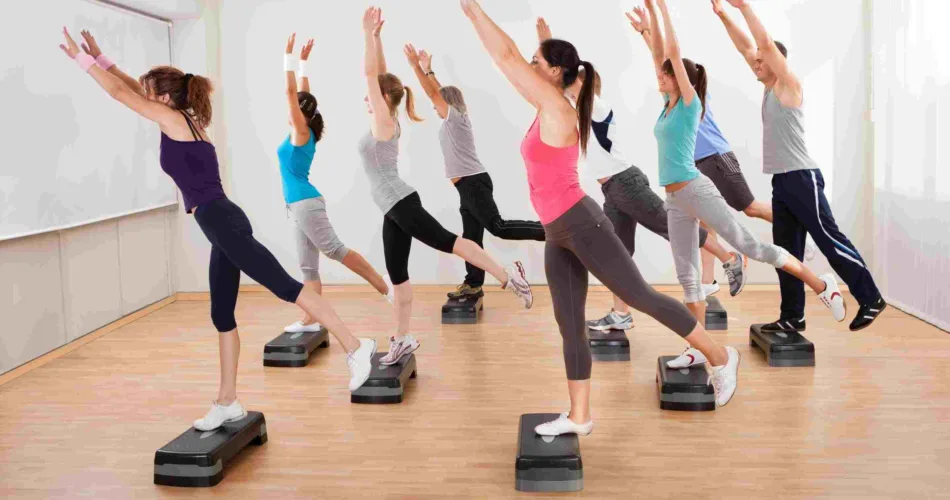Let’s take a closer look at aerobic exercise, which is basically any activity that gets your heart pumping and makes you breathe harder. It’s like a deep dive into exercises that make your body use oxygen efficiently. Aerobic exercises are the ones that keep you moving for an extended period, like brisk walking, jogging, or dancing. These activities help strengthen your heart and lungs, making them work better over time.
When you do aerobic exercises, your muscles use oxygen to produce energy. This kind of exercise not only improves your cardiovascular health but also helps with weight management and boosts your mood. So, diving into aerobic exercises means diving into activities that keep you active, help your heart, and make you feel good overall! Aerobic exercise encompasses any activity that stimulates blood circulation and engages large muscle groups, often referred to as cardiovascular activity. Examples of such exercises include brisk walking, swimming, performing heavy cleaning or gardening, running, cycling, and playing soccer.
Health professionals advise individuals to aim for a minimum of 150 minutes of moderate aerobic exercise or 75 minutes of vigorous activity per week. Moderate activities, such as brisk walking or swimming, and vigorous activities, like running or cycling, contribute to meeting these recommendations. Delve into the benefits and discover practical tips on how to seamlessly integrate aerobic exercises into your routine.

Benefits of aerobic exercises:
-
Enhances Heart Health
To boost your cardiovascular well-being, experts at the American Heart Association and many doctors suggest engaging in aerobic exercise, especially for individuals with, or at risk of, heart disease. This is because exercise not only fortifies the heart but also enhances its ability to efficiently circulate blood throughout the body.
Additionally, cardiovascular workouts play a crucial role in reducing blood pressure and maintaining clear arteries. They achieve this by increasing levels of “good” high-density lipoprotein (HDL) cholesterol while decreasing levels of “bad” low-density lipoprotein (LDL) cholesterol in the bloodstream.
For those aiming to specifically reduce blood pressure and cholesterol, it is recommended to engage in 40 minutes of moderate- to vigorous-intensity aerobic exercise between 3 and 4 times per week.
-
Lowers blood pressure
Aerobic exercise benefits your heart and blood vessels, helps maintain a healthy weight, reduces stress, and promotes better sleep – all of which contribute to lowering and maintaining healthy blood pressure levels. So, next time you go for a brisk walk or a bike ride, know that you’re not just exercising; you’re also taking steps to keep your blood pressure in check and promoting a healthier heart. When we talk about aerobic exercise, we’re referring to activities that get your heart pumping and you’re breathing faster. These can include things like brisk walking, jogging, swimming, or cycling. Aerobic exercise plays a crucial role in maintaining a healthy blood pressure. Now, let’s talk about blood pressure. Blood pressure is the force of blood against the walls of your arteries. When this force is too high, it can lead to health problems, like heart disease and stroke.
-
Helps regulate blood sugar
Aerobic exercise, like walking, running, or dancing, is great for keeping your blood sugar levels in check. Let me break it down for you.
When you do aerobic exercise, your muscles need more energy. To provide this energy, your body uses glucose, which is a type of sugar in your blood. As you move around, your muscles start using up this glucose, and that’s a good thing. Regular aerobic exercise can help lower overall blood sugar levels. This is especially beneficial for people with diabetes or those at risk of developing it. By using up the excess sugar in your bloodstream during exercise, you help prevent it from building up to high levels.
-
Reduces asthma symptoms
Aerobic exercise, like jogging, swimming, or cycling, can be really helpful for people with asthma. Asthma is a condition where the airways in your lungs can get narrow, making it harder to breathe.
When you do aerobic exercise, your body gets stronger, especially your heart and lungs. This makes it easier for you to breathe in and out. It’s like giving your lungs a good workout, making them more efficient.
Aerobic exercise also helps control your weight, and if you are overweight, it can make asthma symptoms worse. By maintaining a healthy weight through exercise, you can reduce the burden on your lungs and make breathing easier. Moreover, aerobic exercise improves your overall fitness, making your body more resilient. This can make you less likely to have asthma attacks and reduce the severity of symptoms. It’s like building a strong foundation for your body to handle challenges.
Remember to start slowly and gradually increase the intensity of your exercise. Always consult with your doctor before starting a new exercise routine, especially if you have asthma. They can give you personalized advice and ensure that you’re doing exercises that are safe and beneficial for you.

Reduces chronic pain
It’s essential to start slowly and gradually increase the intensity and duration of your exercise routine. Always consult with your healthcare provider before starting a new exercise program, especially if you have pre-existing health conditions. Incorporating aerobic exercise into your routine can be a simple and effective way to manage chronic pain and improve your overall quality of life. Aerobic exercise triggers the release of chemicals in your brain called endorphins. These are often referred to as “feel-good” hormones because they help reduce pain perception and promote a sense of well-being. Aerobic activities increase your heart rate and improve blood circulation. This enhanced blood flow delivers more oxygen and nutrients to the muscles and joints, which can aid in reducing inflammation and alleviating pain.
Chronic pain often interferes with sleep. Aerobic exercise can help regulate sleep patterns and promote better quality sleep. Improved sleep can, in turn, contribute to lower pain levels and better overall health. Chronic pain can take a toll on mental health. Aerobic exercise not only addresses the physical aspects but also has a positive impact on mood. It reduces stress and anxiety, which are often associated with heightened pain perception.
Regulates weight
The findings exposed that both men and women experienced significant weight loss, ranging from 4.3 to 5.7 percent of their initial weights. Many participants chose to walk or jog on treadmills for most of their exercise sessions. If you don’t have access to a treadmill, consider taking brisk walks or jogs, like during your lunch break or before dinner.
Depending on your weight and pace, you might need to walk or jog around 4 miles to burn 400 to 600 calories. Combining calorie reduction with aerobic exercise can decrease the amount of exercise required to achieve the same weight loss.

Strength in immune system:
Researchers at Pennsylvania State University examined active and sedentary women and the impact of exercise on their immune systems.
- one group exercised on a treadmill for 30 minutes
- another group did a burst of intense activity over 30 seconds
- the last group did not exercise
All women had their blood taken before, after, and at different intervals in the days and weeks after these exercise sessions. All women had their blood taken before, after, and at different intervals in the days and weeks after these exercise sessions.
The results showed that regular and moderate aerobic exercise increases certain antibodies in the blood called immunoglobulins. That ultimately strengthens the immune system. The sedentary group of women saw no improvement in immune system function and their cortisol levels were much higher than those in the active groups. So, in simple terms, aerobic exercise is like a fun and active training program for your immune superheroes. It keeps them fit, alert, and ready to defend your body against any unwelcome guests. Remember, it doesn’t have to be intense – even a brisk walk or a dance session can do wonders for your immune system.
Improves brain power
When we talk about aerobic exercise, we mean activities that get your heart pumping faster and make you breathe harder. Examples include running, swimming, or cycling.
Now, let’s talk about how this type of exercise can boost your brain power. When you engage in aerobic activities, your body increases the flow of oxygen to your brain. Imagine your brain as a supercomputer that needs a lot of energy to work efficiently. Oxygen is like fuel for your brain, and aerobic exercise helps deliver more of it. As you exercise, your heart beats faster, and your lungs work harder to supply your body with the oxygen it needs. This increased oxygen flow has a positive impact on your brain cells. It helps them function better and may even encourage the growth of new neurons, which are like tiny messengers in your brain.
Aerobic exercise is also known to release chemicals in your brain called neurotransmitters, such as dopamine and serotonin. These chemicals play a crucial role in regulating your mood, reducing stress, and improving your ability to focus.


